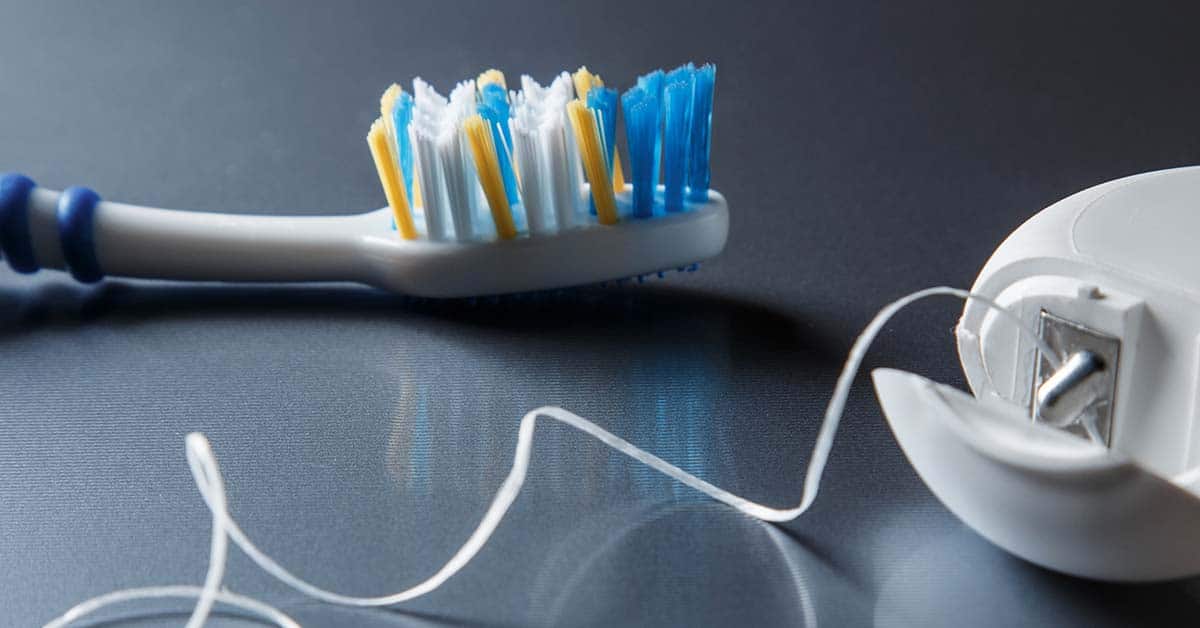It seems like no matter how hard we try, flossing our teeth is always on the tail end of our oral hygiene goals. Flossing videos on Tiktok definitely increased the awareness simply because of the moniker, but dental professionals spend countless hours educating on the importance of flossing teeth.
Many people don’t realize that flossing is equally important as teeth brushing. If you are only brushing your teeth, you’re actually missing cleaning around 40% of your tooth. This means you have an increased risk for tooth decay and gum disease because brushing alone cannot eliminate food and biofilm particles that contribute to oral health problems.
Toothbrush bristles cannot reach all the way between teeth leaving them vulnerable to cavities without flossing. Flossing helps prevent more than just cavities, including:
- Prevents bad breath
- Reduces risk for gum disease and tooth loss
- Reduces plaque levels
- Keeps teeth whiter
If you are currently flossing, you want to ensure you’re flossing properly so you don’t hurt your gums and you can maintain good oral care habits for life.
Different Types Of Floss
There are many types of dental floss depending on your oral hygiene needs and preferences. If you find it difficult to use traditional string floss, fortunately there are numerous options you can try until you find the right fit.
Traditional String
Regular floss is the most recognized type of floss, but surprisingly there are many types of regular floss depending on your taste or texture preferences.
String floss may come flavored, contain fluoride, or come waxed or unwaxed. Some floss is even coated in coconut oil to promote better oral health.
Depending on your preferences, string floss is economical, disposable, and if you don’t like the one you’re using, it is simple to replace until you find the type that is right for you.
Floss Picks
Floss picks are a great option for people who have dexterity issues using regular floss like younger children or older adults. Some people simply prefer a floss pick because it is convenient to use one hand and it is easier to use than string floss.
They work by popping in and out between teeth to remove food and plaque debris. The one downside is they don’t fully wrap around a tooth like regular floss to remove all debris.
Oral Irrigators
An oral irrigator (also known as a waterjet or Waterpik) is a popular floss option and beneficial for your gingival health. It works by using a high pressure, pulsating feature that pushes water through the tooth contacts to remove food and plaque particles.
A waterjet can range from an affordable and simple device to pricier, higher end devices that are used for travel and offer more tip options.
Super Floss
Super floss is recommended for patients with orthodontics or appliances like dental bridges. It contains three parts that help make flossing easier with dental appliances: a spongy area to help clean, a stiffer end to floss underneath an appliance, and a regular end to clean under the gumline.
Interdental Flossers
Interdental brushes are also known as proxy brushes. They help remove debris that may be difficult to remove for people with dental appliances like braces. They are a good adjunct, but should not replace traditional floss or floss picks.
Proper Flossing Steps
Flossing is a technique that seems simple, but sometimes takes some guidance and practice to get right. Here are the correct steps to properly floss and improve your oral hygiene.
- Break off about 18 inches or an arm’s length of dental floss
- Wrap the floss around your two pointer fingers with around 1 inch of slack at each end
- Create a tight C-shape around each tooth once you slide the floss gently between the teeth under the gum line
- Be sure not to press too hard under your gum line to cause bleeding or pain
Use a different, fresh piece of floss for the next tooth or rinse after each tooth flossed
Tips For Flossing
- Stand in front of a mirror so you can see what area you need to work on.
- Show your dentist or dental hygienist at your next visit to ensure you’re doing it properly.
- The American Dental Association recommends flossing at least one time per day, but if you feel like you need to do more, go for it!
- Avoid toothpicks as they can cause gum damage and trauma.
- Use an ADA approved product because it was deemed effective and safe.
- If your gums bleed when you initially floss (and you’re gentle), this does not mean you should stop. It is a sign of gingivitis and you need to continue to clean between your teeth until bleeding stops after a week of regular flossing.
- Try different types of floss to see what works best.
Should you brush or floss first?
It’s an ongoing controversy, but current research shows you should floss and then brush.
This is because flossing helps push out any food and plaque left between teeth and then toothbrushing can eliminate those particles.
You can floss at any time it is convenient for you, but many people opt to floss after meals or in the morning or evening prior to brushing.
Flossing is one of the simplest and effective things you can do for your oral health to prevent long term dental problems. If you are just beginning to floss, don’t get frustrated. Instead work on different techniques and types of floss that work best for you. If you’re an experienced flosser, keep up the habit to enjoy a lifetime of healthy, bright smiles.

